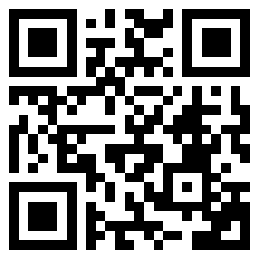DENGUE VIRUS IgM CAPTURE ELISA
This dengue virus IgM capture ELISA kit has been designed for the detection and the qualitative determination of specific IgM antibodies against dengue virus in human serum or plasma.
This ELISA assay is based upon the mu-capture principle. Microplates are coated with anti-human IgM antibody to capture IgM antibodies within the sample. After washing the wells to remove all unbound sample material horseradish peroxidase labelled Dengue virus antigen conjugate is added. This conjugate binds to the captured Dengue-specific antibodies. In a second washing step unbound conjugate is removed. The immune complex formed by the bound conjugate is visualized by adding Tetramethylbenzidine (TMB) substrate which gives a blue reaction product. The intensity of this product is proportional to the amount of specific antibodies in the sample. Sulphuric acid is added to stop the reaction. This produces a yellow endpoint colour. Absorbance at 450/620 nm is read using an ELISA microwell plate reader.
PRODUCT DETAILS – DENGUE VIRUS IGM CAPTURE ELISA
- High sensitivity – 100%.
- High specificity – 98.5%.
- Short assay time – <3 hours.
- 1 x 96 tests.
BACKGROUND
Dengue virus is a single-stranded RNA virus of about 50 nm in diameter belonging to the genus Flavivirus. Dengue and dengue hemorrhagic fever are caused by one of four closely related, but antigenically distinct, virus serotypes (DENV-1, DENV-2, DENV-3, and DENV-4). Infection with one of these serotypes does not provide cross-protective immunity, so persons living in a dengue-endemicarea can have four dengue infections during their lifetimes. The viruses are transmitted by Aedes aegypti, a domestic, day-biting mosquito that prefers to feed on humans. Infection with dengue viruses produces a spectrum of clinical illness ranging from a nonspecific viral syndrome to severe and fatal hemorrhagic disease. It is primarily a disease of the tropics; its global distribution is comparable to that of malaria, and an estimated 2.5 billion people live in areas at risk for epidemic transmission. Globally, there are an estimated 50 to 100 million cases of dengue fever and several hundred thousand cases of dengue hemorrhagic fever. The case-fatality rate of DHF in most countries is about 5%; most fatal cases are among children and young adults. Important risk factors for DHF include the strain and serotype of the infecting virus, as well as the age, immune status, and genetic predisposition of the patient.
REFERENCES
- CDC (1994): Dengue fever among U.S. military personnel–Haiti, September-November, 1994. In MMWR. Morbidity and mortality weekly report 43 (46), pp. 845–848.
- CDC (1995): Imported dengue-United States, 1993-1994. In MMWR. Morbidity and mortality weekly report 44 (18), pp. 353–356. DOI: 10.1001/jama.1995.03530020029013.
- Gubler, Duane J. (2006): Dengue and Dengue Hemorrhagic Fever. In Richard L. Guerrant, David H. Walker, Peter F. Weller (Eds.): Tropical infectious diseases. Principles, pathogens & practice. 2nd ed. Philadelphia: Churchill Livingstone, pp. 813–822.
- Hayes, Edward B.; Gubler, Duane J. (1992): Dengue and dengue hemorrhagic fever. In The Pediatric Infectious Disease Journal 11 (4), pp. 311–317.
- Mansfield, Karen L.; Horton, Daniel L.; Johnson, Nicholas; Li, Li; Barrett, Alan D. T.; Smith, Derek J. et al. (2011): Flavivirus-induced antibody cross-reactivity. In The Journal of general virology 92 (Pt 12), pp. 2821–2829. DOI: 10.1099/vir.0.031641-0.
- Rigau-Perez, Jose G.; Gubler, Duane J.; Vorndam, A. Vance; Clark, Gary G. (1994): Dengue surveillance–United States, 1986-1992. In MMWR. CDC surveillance summaries : Morbidity and mortality weekly report. CDC surveillance summaries 43 (2), pp. 7–19.
- Sharp, Trueman W.; Wallace, Mark R.; Hayes, Curtis G.; Sanchez, Jose L.; DeFraites, Robert F.; Arthur, Ray R. et al. (1995): Dengue fever in U.S. troops during Operation Restore Hope, Somalia, 1992-1993. In The American journal of tropical medicine and hygiene 53 (1), pp. 89–94.
THIS ELISA ASSAY IS FOR RESEARCH USE ONLY. IT IS NOT FOR USE IN DIAGNOSTIC PROCEDURES.









